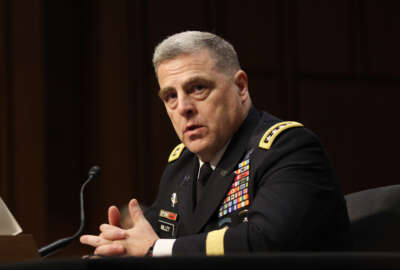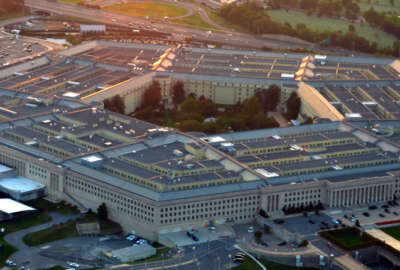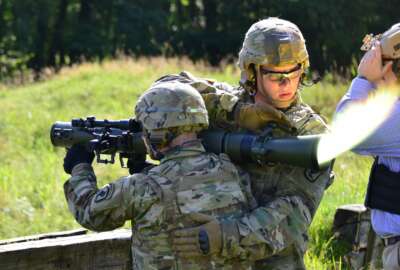
DoD looking for a new kind of service member for 2030
Troops of the future will work hand-in-hand with technology, requiring digital savvy.
In thinking about what the military needs over the next 10 years, the Defense Department is outlining a new strategy around personnel that presents a very different picture of what the populace generally thinks of a service member.
DoD’s Personnel and Readiness Strategy for 2030 cuts an image of a service member working in tandem with a robust IT infrastructure, one who is constantly informed by data and who is surrounded by a diverse cast of highly educated peers.
The picture is a long way from the WWII stereotypes of grunts digging ditches and plodding across rough terrain, though the military still expects its employees to do that as well.
The strategy outlines the need for a “technologically dominant force that is strategically ready, globally relevant and flexibly sustainable,” the authors wrote.
“The cornerstone to this vision is achieving data dominance through digital modernization, seamlessly connecting all our data in real-time and harnessing the skills of a generation of digital natives.”
What’s interesting about this strategy is that there is an interplay between service member and weapon system. While service members will be self-sufficient, they will also be constantly working with technology like artificial intelligence, GPS and various software, which require an interplay between man, machine and data.
“DoD become a distinctly data-centered organization that enables readiness for the joint warfighter,” the authors wrote. “Attaining this data-centric culture requires an appropriately educated and trained workforce, possessing an inherent appreciation for the need to rapidly manipulate and exploit voluminous data, to bring wisdom to senior leaders in real-time at the speed of relevance.”
The purpose of this future service member is to prepare for a world in which the United States may have to contend with two near-peer adversaries. Along with that, DoD is expecting shifts within the makeup of the labor force and technological disruptions from industry.
To build this new kind of employee, DoD says it needs to provide the right kind of infrastructure. That includes having a robust IT model, room for innovation from all ranks and ways to digest data in a coherent way.
It means that DoD will also have to change its focus on who it recruits and how it retains and educates its troops.
“DoD must develop and realize a workforce possessing the digital knowledge, skills, abilities, and attributes needed to create and operate effectively within a data-centric enterprise,” the strategy states. “DoD must be culturally data-centric, with an educated workforce possessing the inherent recognition of the need to rapidly manipulate and exploit voluminous data to its full potential for wise decisions. This digitally savvy workforce must intuitively understand how to effectively validate, analyze, interpret, and extrapolate data to provide information, knowledge, and wisdom for department leaders.”
The strategy states that DoD must provide education to keep troops at the forefront of technology in an interconnected global environment.
DoD also says it needs to change the way it approaches personnel. The strategy rejects the “industrial-era” personnel system DoD currently uses. It calls into question the “up or out” policy that forces service members to promote or leave the military.
It states that DoD needs to manage a technologically advanced workforce by tailoring the force to the right roles based on an individual’s knowledge, skills, abilities and preferences.
In short, DoD is expecting a hybrid world with heavy technological influence.
“DoD’s success lies in a strategically ready force through cultivation of digitally savvy service members and civilians to successfully operate within a global security environment fueled by ground-breaking technological advancements,” the strategy authors stated.
Copyright © 2025 Federal News Network. All rights reserved. This website is not intended for users located within the European Economic Area.
Scott Maucione is a defense reporter for Federal News Network and reports on human capital, workforce and the Defense Department at-large.
Follow @smaucioneWFED






